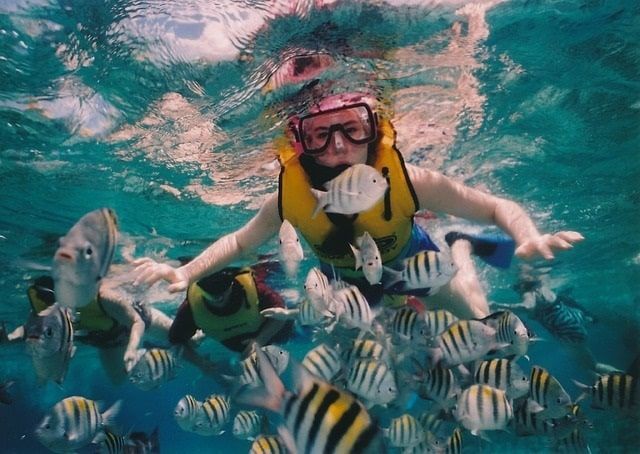Cozumel reefs contaminated with parasites
Cozumel reefs are contaminated with parasites, whose appearance of marine organisms asphyxiates the real ones, also the presence of algae is favored by nutrients.

Research from the Autonomous Metropolitan University (UAM), determined that Cozumel reefs are contaminated with parasites, whose appearance of marine organisms suffocate the real, also the presence of algae favored by nutrients.
Dr. Laura Georgina Calva Benítez, the researcher at the UAM, led the presentation before Pedro Joaquín Delbouis, municipal president, personnel of the Marine Park, the Naval Sector, Port Captaincy, environmentalists, and researchers, regarding a study on the presence of nutrients in relation to macroalgae indicators of pollution, which reported "unfortunately were found levels above permissible limits especially orthophosphate and ammonium.
She confirmed that in addition to the indicator macroalgae, they noted "the presence of different species of cyanophytes that are parasitizing and competing with corals, with sponges in addition to a tunicate that in October and November 2018 were only parasitizing or competing with sponges, but unfortunately this week's dives left evidence that it is affecting part of corals.
She believes that the presence of sargassum and its degradation is also favoring the release of nutrients that are reaching the reefs and increases the problem.
The samples they take are related to orthophosphate, ammonium, nitrites, and nitrates, pointing out that to the north of the island, where Laguna Ciega is located, they set "a point with very high levels, in addition to levels of anoxia that correspond to oxygen, and that there are reefs such as Tormentos and Chankanaab that registered high levels of nutrients, which is indicating that there is a contribution from part of the land.
On the management of sewage, she stressed that "so far we do not know what is the efficiency of the treatment plant that has Cozumel, and I can not say categorically (because only one point is shown) if this treatment plant reverses a very strong problem because it would be necessary to do at least five to six sampling stations to give an assertion of that magnitude.
Before the question, of the state of health of the reefs of Cozumel with all the factors described by her and the "white syndrome", she exposed that "from October to November until two days ago, the reef is more damaged, apart is a multifactorial problem and not only we have a problem that can be some bacteria, here is joining the part of cyanophytes, tunicates, then it is already becoming a more important problem that we have to take in a very serious way, by the speed at which these changes are taking place".
It is urgent to treat it and based on testimonies gathered from people dedicated to diving, she highlighted that the changes have been accelerated from January to date, in fact she says that the amount of fish observed last year until now in some reefs have already been reduced, and in a personal experience she heard that some foreign and oriental tourists almost claimed local divers who had not seen fish as they had been promised when they bought the excursion.
She explained that the issue of caring for the reefs "has to be a priority because Cozumel is not only important because it is part of the Mesoamerican reef, but also has an economic problem, social, many people depend on tourism and if this is neglected, it will have social repercussions.
She began by saying that the research she presented was financed by the Federal PROCODES program, as well as the Iztapalapa UAM, although she considers it "a small investigation, indicating that the ideal would be to make samples in times of dry, rainy, and 'nortes', and include coliform bacteria, fecal, streptococcus, and the part of polycyclic aromatic hydrocarbons that are generated because here we have many two-stroke motor vehicles, four-stroke, ferry, cruise ships, there are many types of boats that generate polycyclic aromatic hydrocarbons and these are very important because they can have toxic effects, mutagenic, not only for organisms but also for man.




